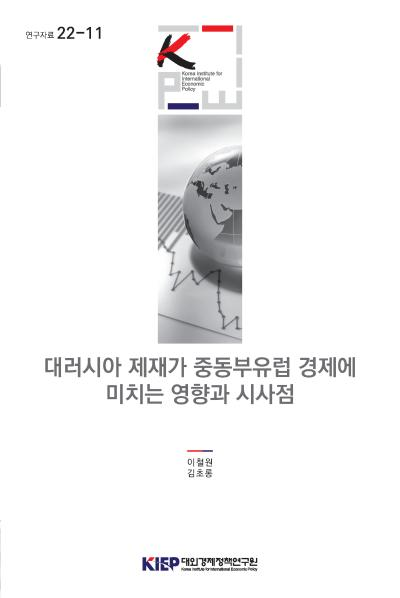Policy Reference
PUBLISH
Policy Reference
To list

The Impact of Anti-Russian Sanctions and Implications for the Economy of Central and Eastern Europe
Economic cooperation, Overseas direct investment
Author Cheolwon Lee and Cho Rong Kim Series 22-11 Language Korean Date 2022.12.30
The Russia-Ukraine war and EU sanctions against Russia are having a negative impact not only on Russia but also on the overall EU economy, and these negative effects are expected to continue into 2023 as the war prolongs. Central and Eastern European countries, which enjoy relatively strong trade, business and energy-related links with Russia, have been hit particularly hard. Central and Eastern European countries bordering Russia and Ukraine are relatively dependent on Russia for energy, and are expected to suffer the greatest economic damage in terms of trade relations.
Policies toward Russia in Central and Eastern Europe have maintained various stances depending on country, ranging from Poland, which consistently maintains an anti-Russian stance, to Hungary, a typical pro-Russian country, or have recently undergone a change in stance. Central and Eastern European countries located on the EU border or those close to Russia and have some legacy of past socialist alliances, regardless of their pro-Russian or anti-Russian ties, generally have close economic ties with Russia. Therefore, after the invasion of Ukraine, the EU’s sanctions on Russia will inevitably have a serious impact on the Central and Eastern European countries in various sectors such as trade, investment, and finance as well as the energy sector, which is expected to suffer a direct short-term impact.
In 2004 and 2007, Korean companies entered Central and Eastern Europe in large numbers including the four Visegrad countries (Poland, Czech Republic, Slovakia, Hungary), set production bases in Europe, and then made further investments. The Visegrad V4 countries represent the largest export market for Korea in the EU, accounting for 28.3% of its exports to the EU in 2020. As such, Central and Eastern Europe, where Korea has the most active economic cooperation in Europe, is expected to suffer the most serious and diverse negative impacts from geopolitical crises, including the recent Russia-Ukraine war. We analyze that major countries in Central and Eastern Europe will experience slightly different economic impacts and show disparate policy tendencies toward Russia in the face of geopolitical crises, and accordingly, it will be necessary for Korean companies to prepare differentiated countermeasures. In particular, it is time to review Korean companies’ strategy toward Europe based on an in-depth analysis of the economic impact of the geopolitical crisis on countries in Central and Eastern Europe.
The purpose of this study is to analyze the impact of EU sanctions against Russia on Central and Eastern European countries from various angles after the outbreak of war between Russia and Ukraine, and to draw implications for Korea’s economic relationship with Central and Eastern Europe. This study is largely composed of the following three issues. First, it shows how these Central and Eastern European countries have close economic relations with Russia, second, how the geopolitical crisis originating from Russia will affect the Central and Eastern European economy, and finally, third, how Korean companies and governments should respond to economic relations with Central and Eastern Europe. Therefore, following the introduction in Chapter 1, Chapter 2 sheds light on the relationship between Central and Eastern Europe and Russia, including trade, investment, and energy. And in Chapter 3, the EU’s sanctions against Russia and their future trajectory, the impact on the Central and Eastern European economy, and the changes in the local business environment of the companies entering the market were analyzed. Finally, in Chapter 4, based on the above-mentioned analysis and economic relations between Korea and Central and Eastern Europe, implications for Korean companies and governments were derived.
Sales Info
| Quantity/Size | 138 |
|---|---|
| Sale Price | 7 $ |
 공공저작물 자유이용허락 표시기준 (공공누리, KOGL) 제4유형
공공저작물 자유이용허락 표시기준 (공공누리, KOGL) 제4유형
대외경제정책연구원의 본 공공저작물은 "공공누리 제4유형 : 출처표시 + 상업적 금지 + 변경금지” 조건에 따라 이용할 수 있습니다. 저작권정책 참조
